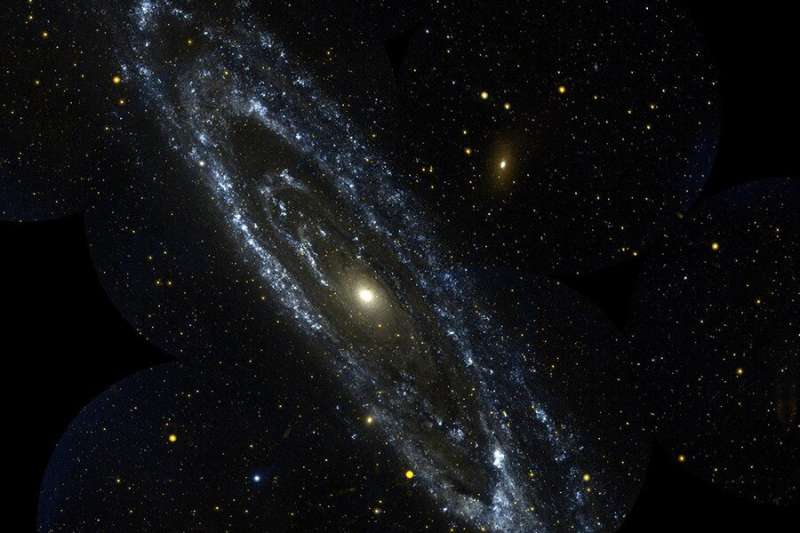Astronomers to discuss new satellite galaxy simulation

Using a new simulation, Johns Hopkins University researchers have reconciled predictions about neighboring galaxies with what has been observed by astronomers and high-powered telescopes. The results have been at odds for decades.
"When people started to see these streams of satellite galaxies everywhere in their telescopes, the modelers who run these super computer simulations said, 'Oh! Impossible! These should be very rare at best,'" said Charlotte Welker, a postdoctoral fellow who worked on the solution with second-year Ph.D. student Janvi Madhani.
They concluded the problem was not actually with the cosmological model of the universe, but rather stemmed from past simulations that suffered from a lack of resolution on small scales and a lack of volume on large scales.
"It's a real a-ha moment," said Susan Kassin, an astronomer at the Space Telescope Science Institute, who advised the team.
The team will discuss their findings at 5:15 p.m. on June 14 at the American Astronomical Society conference, which will be livestreamed on YouTube.
The Hopkins team used what they call "zoom-in simulation" to study a larger area at a higher, close-up resolution. Called New Horizon, this cosmological simulation was developed by their collaborators in Paris in 2018.
The resulting simulations showed 30% of Milky Way-type galaxies to display planes, compared to previous studies which found planes in less than 2% of candidate systems.
"With this new result, we no longer have to abandon our model of cosmology or adopt a new theory of gravity to explain the occurrence of these planes," Madhani said.
Provided by Johns Hopkins University




















